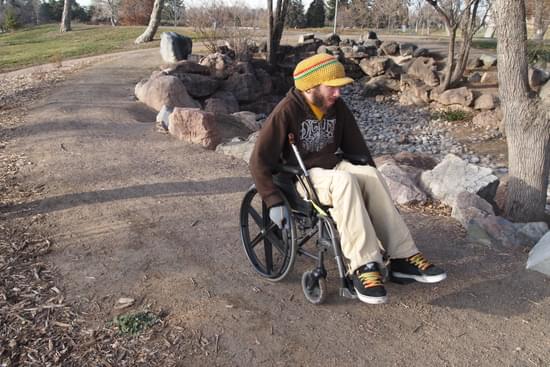




On September 26, 2013 the U.S. Access Board issued new accessibility guidelines for outdoor areas on federal lands. The guidelines provide detailed specifications for accessible trails, picnic, and camping areas, viewing areas, beach access routes, and other components of outdoor developed areas when newly built or altered.

On September 26, 2013 the U.S. Access Board issued new accessibility guidelines for outdoor areas on federal lands. The guidelines provide detailed specifications for accessible trails, picnic and camping areas, viewing areas, beach access routes, and other components of outdoor developed areas when newly built or altered. They also provide exceptions for situations where terrain and other factors make compliance impracticable.
Requirements for trails and pedestrian access routes address surface characteristics, width, grade, and cross slope. Exceptions are included for these and other provisions under certain conditions stipulated in the guidelines. Departures are allowed where compliance is not practicable because of terrain or prevailing construction practices. Exceptions are also recognized where compliance would conflict with mandates such as the Endangered Species Act and other laws or where it would fundamentally alter a site’s function or purpose.
Under this rulemaking, the Access Board is first developing guidelines under the Architectural Barriers Act (ABA) for outdoor developed areas managed by the federal government. Guidelines for non-federal sites covered by the Americans with Disabilities Act (ADA) will be developed separately at a later date. The Federal guidelines originate from recommendations prepared by the Outdoor Developed Areas Regulatory Negotiation Committee, an advisory panel chartered by the Access Board, of which American Trails was a member.
The guidelines apply to Federal land management agencies, including the Fish and Wildlife Service, U.S. Forest Service, National Park Service, Bureau of Land Management, Bureau of Reclamation, and Army Corps of Engineers.
The guidelines cover only new or altered facilities, not existing ones. In addition to trails, the guidelines address beach access routes, outdoor recreation access routes, picnic areas, and camping areas. Guidance is provided for the following constructed features: camping units, picnic units, viewing areas, tent pads and platforms, camp shelters, parking spaces at camp or picnic units, RV spaces at campsites or dump stations, benches, picnic tables, fire rings, grills, trash receptacles, water hydrants, telescopes & periscopes, utility hookups, and outdoor rinsing showers.
Non-Federal entities that construct or alter facilities on Federal lands on behalf of the Federal government are also included. The Federal guidelines will also apply to the following:
Please note: This final rule does not apply to facilities covered under Title II and Title III of the Americans with Disabilities Act (ADA) or entities receiving federal grants and loans for work not on federal lands. Guidelines for non-Federal sites covered by the Americans with Disabilities Act (ADA) will be developed separately through a subsequent rulemaking. The additional rulemaking will include a proposed rule that will invite public comment and then a final rule.
The Federal Guidelines are under the Architectural Barriers Act, and will be incorporated into the Architectural Barriers Act Accessibility Guidelines (ABAAG). The ABA and ABAAG are what apply to Federal Lands. Please note you can link to this page for more info about the ABA: http://www.access-board.gov/guidelines-and-standards/buildings-and-sites/about-the-aba-standards
posted Apr 25, 2024
Your organization's support is needed to secure funding for our nation's trails in the Fiscal Year 2025 Appropriations legislation. Please take the two actions below and sign-on to the letter of support for trails funding and submit these funding requests with your House and Senate office websites. Please share widely with other trail organizations and user groups!
*** LAST CALL! REMINDER! *** 2024 North American Trail Sector Survey Open!
posted Apr 24, 2024
Deadline: April 30. American Trails is partnering with Trans Canada Trail to launch the inaugural North American Trail Sector Survey.
Apply Now! $45 Million in ATIIP Grants Available
posted Mar 20, 2024
Applications are now open for the first ever funding round of the Active Transportation Infrastructure Investment Program (ATIIP).
Action Alert: Active Transportation Infrastructure Investment Program (ATIIP)
posted Mar 5, 2024
Our partners at Rails To Trails Conservancy are warning us that Congress has reached a tentative deal to fund the U.S. Department of Transportation (USDOT) for Fiscal Year 2024, and it does not include the Active Transportation Infrastructure Investment Program (ATIIP).
4,411 views • posted 03/30/2018